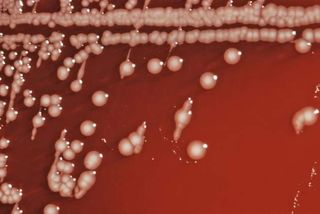Salmonella Infections on the Rise, CDC Says

More than 1 million people become ill from salmonella each year, resulting in an estimated $365 million in direct health care costs, according to a new report from the Centers for Disease Control and Prevention (CDC). Infections from this food-borne bug increased 10 percent in 2010 over the infection rate in the years 2006 to 2008, the report said. Today, the incidence of salmonella infections is about the same as it was 15 years ago. But it's not all bad news on the food safety front. Over the last 15 years, the overall rate of infection from six food-borne pathogens decreased 23 percent, the CDC said. And reported infections from the deadly E. coli O157 bacteria are down nearly 50 percent. "Thanks to our prevention-based approach to food safety, as well as industry and consumer efforts, we have substantially reduced E. coli O157 illnesses," Dr. Elisabeth Hagen, undersecretary for food safety in the U.S. Department of Agriculture, said in a statement. "However, far too many people still get sick from the food they eat, so we have more work to do," Hagen said. The burden of food-borne illness The report summarized data from the CDC's Foodborne Diseases Active Surveillance Network (FoodNet), which tracks the incidence of nine common food-borne bugs. In 2010, there were close to 20,000 illnesses, 4,200 hospitalizations and 68 deaths reported from the nine pathogens. Salmonella was the most commonly reported infection, with 17.6 illnesses per 100,000 people. For E. coli O157, there were 0.9 infections per 100,000 people. That compares with two cases per 100,000 people in 1997. The CDC credited the reduction in E. coli O157 cases partly to improved detection and investigation of outbreaks involving the bug. In addition, cleaner slaughter methods, improved inspections of ground beef processing plants and increased awareness about the importance of properly cooking beef likely also contributed to the decline, the CDC said. Salmonella infections could be reduced by using some of those same approaches, the CDC said. Reducing infections Curbing salmonella outbreaks is challenging because the bug can be found in many different foods, including meats, eggs, produce and even processed foods. The passage of the Food Safety Modernization Act in December gave the Food and Drug Administration the power recall food and increase inspections of food processing facilities. The FDA has also implemented new egg safety rules which are expected to reduce infections from eggs by 60 percent, said Michael R. Taylor, the FDA deputy commissioner for foods. But government intervention can only go so far in reducing food illnesses, said Douglas Powell, a professor of food safety at Kansas State University. "Whether it's on the farm, in the slaughterhouse or in distribution," the food industry should take steps to ensure their food is safe, Powell said. "Walmart serves a lot more meals than the government does," he said. Food producers and suppliers should build safety into their systems, Powell said. This can mean ensuring wash-water used to clean produce is free from contamination and enforcing employee hand-washing, he said. In addition, consumers should be aware of situations where they might encounter infectious microorganisms, which include contact with pets as well as with food. "What I think is really needed is just a mass increase of food safety culture," Powell said. To reduce the risk of food-borne illness, people should assume raw meat carries infectious pathogens and should not allow it to contaminate surfaces or other foods, the CDC said. It's important to wash produce thoroughly, and people should also cook chicken, other meats and eggs thoroughly, avoid consuming unpasteurized milk and make sure shellfish are cooked or treated for safety before eating, the CDC said.
This story was provided by MyHealthNewsDaily, sister site to LiveScience. Follow MyHealthNewsDaily staff writer Rachael Rettner on Twitter @RachaelRettner.
Sign up for the Live Science daily newsletter now
Get the world’s most fascinating discoveries delivered straight to your inbox.

Rachael is a Live Science contributor, and was a former channel editor and senior writer for Live Science between 2010 and 2022. She has a master's degree in journalism from New York University's Science, Health and Environmental Reporting Program. She also holds a B.S. in molecular biology and an M.S. in biology from the University of California, San Diego. Her work has appeared in Scienceline, The Washington Post and Scientific American.
